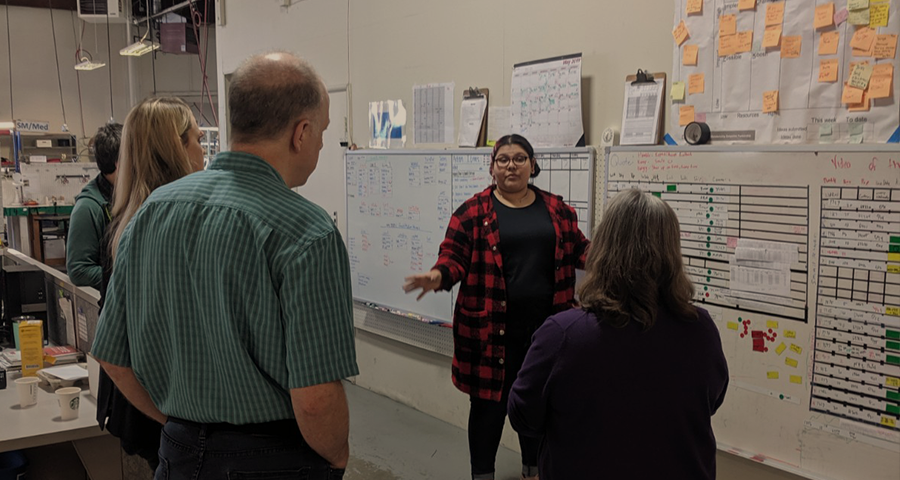Many studies have cited the skills shortage as a reason manufacturers can’t find or keep workers. While there is no denying that the traded sectors are having difficulty attracting and finding talent compared to other industries, consider that old-school recruiting and training strategies may be the culprit.
Manufacturers who complain that they can’t find or keep employees often require unreasonably high standards of work experience or certifications that screen out candidates who could be successful with just a small amount of training. Additionally, many companies may look for the “perfect candidate” who requires no training because they fear that investments in training will be lost if the employee leaves the company.
The reality is, when manufacturers embrace their uniqueness and realize that it’s not up to schools or other entities to train their employees, they create significant competitive advantage for themselves.
Creating in-house training to bring entry-level personnel in and providing training and career development throughout the organization mitigates risks to any skills shortage and results in lower labor costs. I’ve seen dramatic results from companies who took action to improve recruitment, on-boarding and engagement practices.
Small manufacturers can lower labor costs without layoffs, and reduce employee turnover by embracing these strategies:
Revise your job descriptions to focus on your company culture.
Make your workplace somewhere people want to be. Local business A.R.E. Manufacturing increased their hiring pool by 30 percent when they revised job postings to reflect their culture and eliminated unnecessary certification requirements.
Create an on-boarding process that welcomes and inspires new employees from day one.
Get away from institutional knowledge by building standard training to engage existing and new employees. With a structured on-the-job training program, Hardwood Industries improved order processing time by 90% and up-skilled existing workers.
Build clear career paths for new and existing employees, so they can see what they need to do to grow within your company.
This allows you to avoid paying based on longevity, creating clear and measurable compensation systems that move you toward compliance with Oregon’s Equal Pay Act.
The bottom line is that in order to succeed, people need to have processes in place that support their success.
If standardized, predictable process are not visible or practiced, people doing the work will not be set up for success. By building a clear hiring and on-boarding practice and paving the way for growth with a defined career path, you create a space where people want to be.
OMEP is available to support your training and hiring practices. Learn More >




